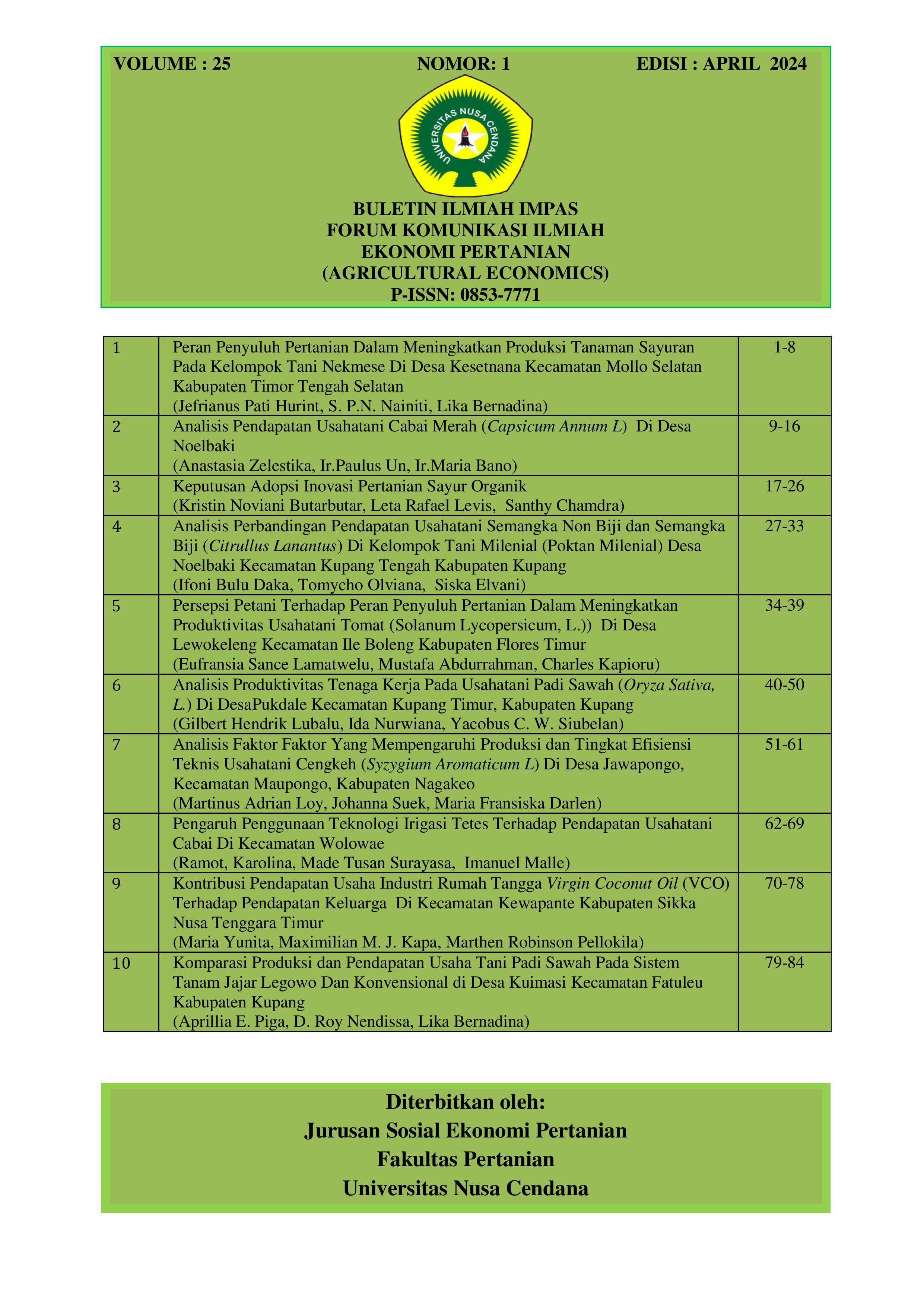ANALISIS PRODUKTIVITAS TENAGA KERJA PADA USAHATANI PADI SAWAH DI DESA PUKDALE KECAMATAN KUPANG TIMUR
Abstract
There are many factors that impede the increase in labor productivity at the research location including education level, farming experience, age and land area. The purpose of this study was to determine the level of labor outpouring in lowland rice farming and to determine the factors that influence labor productivity in lowland rice farming in Pukdale Village, East Kupang District. The location selection was carried out deliberately (purposive sampling), determining the number of respondents according to Arikunto (2010), if the number of subjects was less than 100 then all were taken but if more than 100 then the number of subjects was taken around 10%, 15%, 20%, 25% or more. Therefore, the number of samples to be taken at simple random in this study is 10% of the total population of 650 people (Pukdale Village Program, 2021), namely 65 samples. The data collection method used is purposive sampling method (intentionally). The types of data used are primary data and secondary data. Data collection techniques in this study were carried out using questionnaires or questionnaires, interviews and documentation. For the first objective using HKO analysis = Number of working days X number of working hours X number of people divided by 7, for the second objective using multiple linear regression equations with Douglas's Cobb function.
The results showed that the level of labor outpouring was divided into eight parts, namely the land preparation stage with a total of 165,571 HKO, the seed preparation stage with a total of 161,571 HKO, the planting stage with a total of 362,857 HKO, the fertilization stage with a total of 178,571 HKO, the treatment stage with a total of 91,714 HKO, the pest and disease control stage with a total of 132,286 HKO, the harvest stage with a total of 195 HKO and post-harvest with a total of 464 HKO. Of the eight stages, a total of 1,751,570 HKO was obtained with an average of 26,947 and an average per hectare of 33,945 . The results of the regression analysis show that the area of land (X1) and education (X3) have a significant effect on the outpouring of labor (Y). While age (X2) and experience (X4) have no significant effect on labor outpouring (Y).

 Gilbert Hendrik Lubalu(1*)
Gilbert Hendrik Lubalu(1*)















